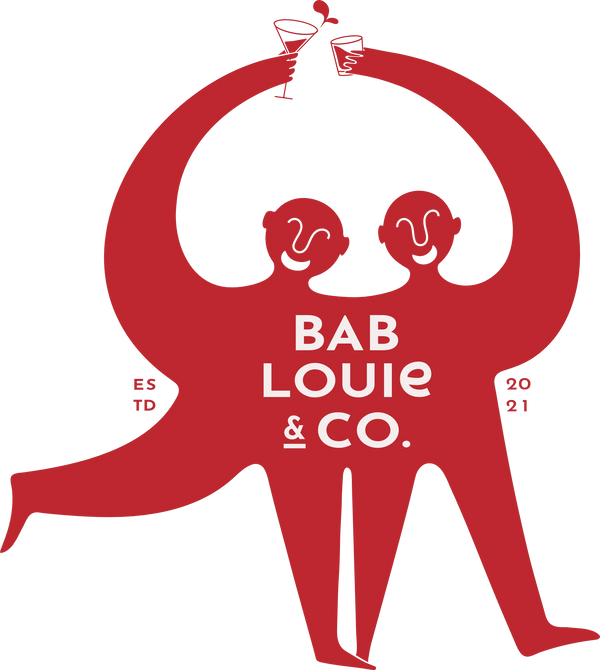
All About Bitters in Cocktails
Share
You guys might be wondering why anybody would want to add bitterness to their cocktail? Bitterness is the last thing anybody would want to taste. But bitters play an important role in bringing out the actual flavours of a cocktail.
The Science behind Bitters?
When we say flavour, it involves two aspects : the taste in our mouth and the smell in our nose. Flavour consists of taste and smell. Remove either pathway and the “flavour” diminishes. The researches have isolate five basic flavours that we receive through out mouth: Sour, Salt, Sweet, Bitter, Umami (savory). Everytime we taste something in our mouth, a signal is sent to our mind and we perceive the food accordingly. The perception of sweetness is associated with a feeling of wholesome, comforting, freshness. While sour flavour is slightly complicated, it usually indicates the presence of some bacterias, fermentation, acidity, making us have a feeling of spoilage or something harmful therefore sends a warning sign to be careful of that particular food item.
Bitterness works in the same way, it alerts our mind making us conscious while consuming the particular food item. That is why slight bitterness in the cocktails makes all the flavours pop. The bitterness doesn’t increase the flavour in the drink, all it does is it makes our mind alert therefore makes us notice the flavour more.
The Bitter Story
Traditionally, Bitters were tinctures concocted from plants deemed to have medicinal benefits. To a large degree it was the “bitterness” itself that was considered medicine. The origins of bitters go back to the ancient Egyptians, who may have infused medicinal herbs in jars of wine.This practice was further developed during the Middle Ages, when the availability of distilled alcohol coincided with a renaissance in pharmacognosy,which made possible more-concentrated herbal bitters and tonic preparations.
By the nineteenth century, the British practice of adding herbal bitters (used as preventive medicines) to Canary wine had become immensely popular in the former American colonies.By 1806, American publications referenced the popularity of a new preparation, termed a cocktail, which was described as a combination of "a stimulating liquor, composed of spirits of any kind, sugar, water, and bitters.
Of the commercial aromatic bitters that merged during this period were the most well knowned and widely used Angostura Bitters, invented in 1824 by J.G.B Siegert as a remedy for stomach problems of Simón Bolívar soldiers. In spite of its name, the preparation contains no medicinal bark from the angostura tree; instead, it is named after the town of Angostura, present-day Ciudad Bolívar, in Venezuela.
In the late 1800s theres were hundreds of new quality bitters but Angostura won out over all the other bitters of that time and emerged as a titan of the twenty-first century. The diversity of bitters in cocktails is intwined with the diversity of cocktails themselves.
With pasing time, emerged Peychaud’s bitters invented in 1830 by Antoine Amedée Peychaud in New Oreleans. These bitters gained popularity due to their versatility, watery consistency and a trade mark “anise- forward” flavour. Though the production of these bitters along with many others were ceased during prohibition but Peychaud’s returned in 1933
Now comes another most know bitters Fee Brothers, which did not make bitters prior prohibition. These bitters did not follow the traditional approach of making bitters. The traditionally bitters were made in alcohol, more or less sweetned, aged and always originated from an herbalist. But Fee Brothers based their bitters on Glycerine rather than alcohol, flavoured thier bitters with natural and artificial flavouring and colouring rather than aging their bitters with herbal botanicals.
Recently, as the market for bitters has exploded, some companies have dropped the idea of a bitter being “bitter” at all, more of used like flavouring agent. These companies sell their product as “Bitters”, maybe we can all it a marketing strategy instead of labelling them as un-bitter bitters…just saying!! It would have been better if they called their product as cocktail spice or cocktail flavouring without claiming bitterness and with misguiding the population about the concept of bitters.
It is sad to know that most of the people now thing Bitters is name given to a cocktail flavouring agent. While the truth and science behind adding bitterness in the cocktail is fading.
Bab Louie & Co. worked on the principle of Bitters and tried to preserve the traditional method of making Bitters & aiming to preserve the Legacy of Indian Botanicals . Bab Louie Bitters are made the traditional way using only natural botanicals; real fruits, citrus peels, roots, hebs and spices. Crafted with care and love, these bitters bring out the best in a cocktail. No amount of natural/ artificial flavour or colour is added to these bitters. These bitters are based on glycerine and aged with layers of botanicals for several weeks to achieve the desired balance of flavours and bitterness for sure! Bab & Louie believed the importance of a true bitterness and complexity of flavors in a cocktail.
Currently Bab Louie & Co. has three most basic yet universal flavours of Bitters that goes with almost all the cocktails: Spiced Aromatic Bitters, Orange Bitters, Smoked Cherry Bitters.
Being non alcoholic, these bitters are not limited to the cocktail lovers/ alcohol aficionados. These bitters can even give the non alcoholics the taste of a classic cocktail !
